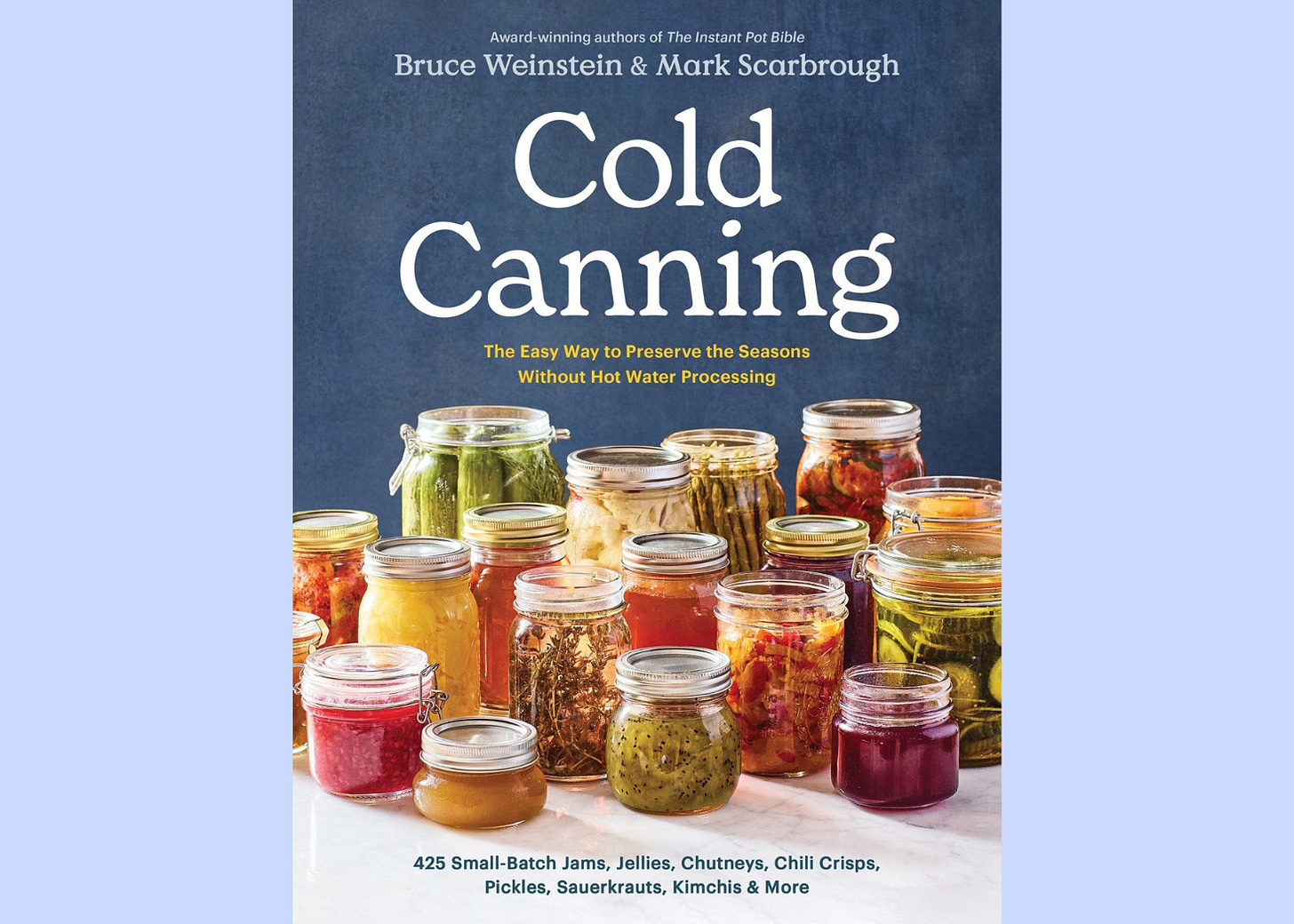Stay Cool and Jam Out
Cold Canning: The Easy Way to Preserve the Seasons Without Hot Water Processing
How’s your freezer space looking? Does it have room for about 400 batches of jams, pickles, chile crisps, chutneys, kimchi, and relish? Because while the concept of Cold Canning is not new—simply freezing or refrigerating your preserves rather than hot-water processing—this compilation of 425 recipes will have you headed to the kitchen.
Of course, some of us love traditional water-bath canning; The warm feeling you get from bejeweled jars stacked tall on pantry shelves outweighs the sweaty-hot feeling of standing over a steaming stockpot. But to make that worth the time often means canning large batches, which fits fewer households’ needs with every passing year.
Most of the recipes in Cold Canning instead yield just several cups and take little prep time. That means it’s even more fun—though with caveats—to experiment with many recipes here, so long as your freezer can hold out.
Start with the basics: jams, jellies, preserves, and marmalades. Authors Bruce Weinstein and Mark Scarbrough don’t spend time fretting over whether jams should be made without commercial pectin; they just go for it, for less sugar, shorter cooking and fresher taste, and consistent results. Most of their jam and preserve recipes follow a simple outline: Stir together granulated sugar and a few tablespoons of less-sugar pectin powder, mix with fruit in a saucepan, boil for a minute, fill half-pint jars, freeze.
So within a short afternoon in the kitchen, you might jar up three to five half-pints each of raspberry jam, blueberry jam, cherry preserves, three-berry jam (blueberries, blackberries, raspberries), and a blueberry chia seed jam for good measure. And how about using more blueberries for a thick blueberry-onion jam to dollop onto tonight’s bratwurst?
With frozen fruit an option for many of the recipes, these make quick delights year-round. In that afternoon of testing, all those jams came out well—thick but not rubbery, and easy to play with by adding herbs, spices, extracts, and citrus zest. Keep going with strawberry preserves, apple cardamom jam, sweet or sour orange marmalade, blood orange marmalade, and triple-citrus marmalade; without much work, you could throw a scone party for a crowd with jar upon jar of toppings.
Then move to the savory side—try the spicy, lemon-tinged ginger jam to go with biscuits and with—or in—a cup of tea, or the onion-bourbon jam to spread on a burger or add to a cheese plate. Both of these also came out well in tests.
But that’s just the beginning. Move on to salsa macha (coconut-pecan! cherry-pistachio!), chutney, pickles, relishes—possibly pause at the fennel relish or carrot-ginger relish—preserved vegetables, sauerkraut, kimchi, infused oils, sweet sauces, and chile crisps. Tests of three chile crisps—one with star anise and smoked paprika, another with sumac and cinnamon, and a third with gochugaru and hefty doses of scallions, garlic, and ginger came out well, to make a rice bowl or fried eggs happy; also try the authors’ suggestion to mix the sumac-cinnamon crisp with honey and spread it on rye crackers.
But—the caveats: First, look out for issues with ingredient amounts. That gochugaru crisp called for ½ cup gochugaru flakes—but said that equaled 136 grams. (More like 36.) And while one recipe called for “¼ cup (20 grams)” Aleppo pepper flakes, another called for “½ cup (60 grams)” of the same flakes. One typo I understand. But when I hit more than one in a random sampling of recipes, it makes me wary of all the recipes. So cooks should judge before jamming.
Another issue: The recipe for persimmon jam calls for “vaguely soft” Fuyu persimmons; the headnote calls for “a firm texture but with some give in the skin.” Go for more than vague, though, and move past a firm texture; tested with persimmons that were apparently on the wrong side of firm, this never became a luscious jam, even with extremely extended simmering in extra liquid. It ended up as something approaching a meh-flavored preserve that could be used over yogurt.
Keeping those warnings in mind, if you get a canning hankering, you’ll surely find something here to fit your mood and pantry. While often not cutting-edge recipes, the variety of standards plus some more unusual flavors makes Cold Canning worth your shelf and freezer space.
Quick takes:
Cold Canning: The Easy Way to Preserve the Seasons Without Hot Water Processing, by Bruce Weinstein and Mark Scarbrough. 448 pages. Published by Voracious, 2025.
Organization: By type of recipe (such as sweet jams, savory jams and chutneys, pickles).
Ingredients measurement methods: Ounces and grams for dry/solid ingredients, cups and milliliters for liquids.
Photos: Photos of some recipes or the recipes in use.
Index: Comprehensive.
Disclosure: I am an affiliate of Bookshop.org, which supports independent booksellers, and I will earn a commission if you click through and make a purchase on the title above.
The Spice of Life
Everything is better with Pepper
Pepper’s advice: Stay cool, lay low, and everything will be fine.




